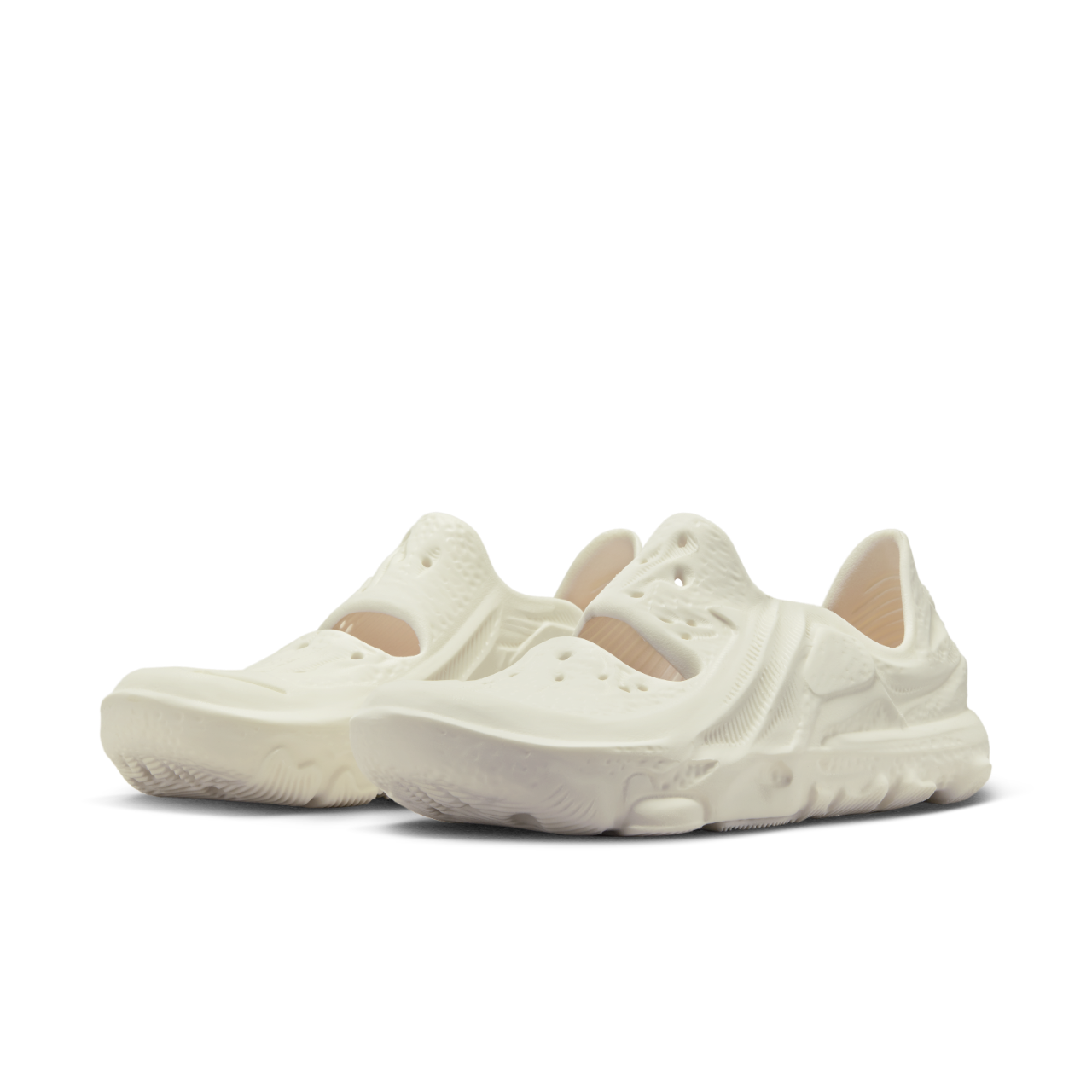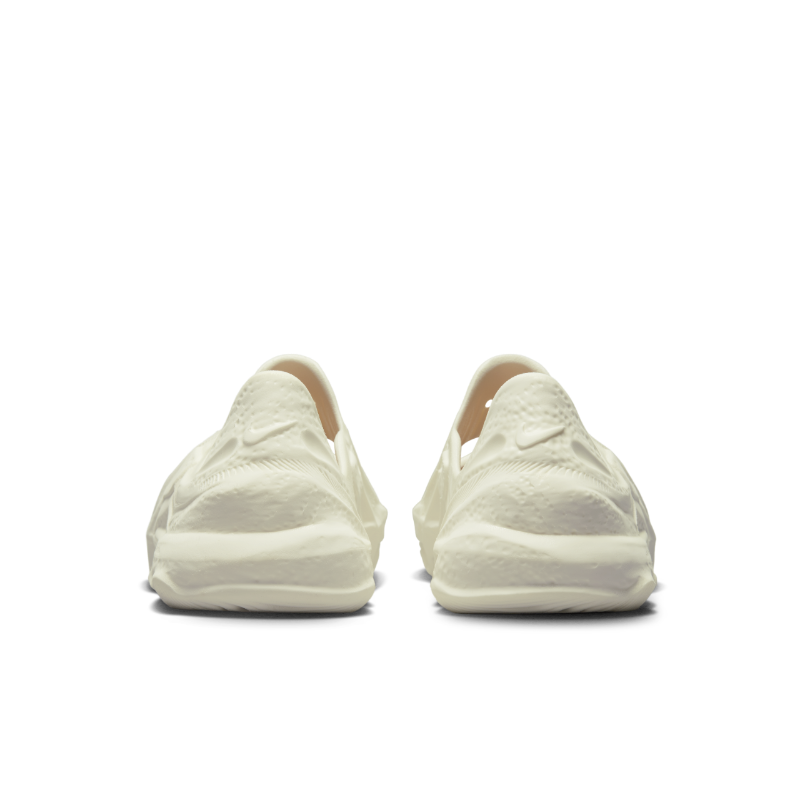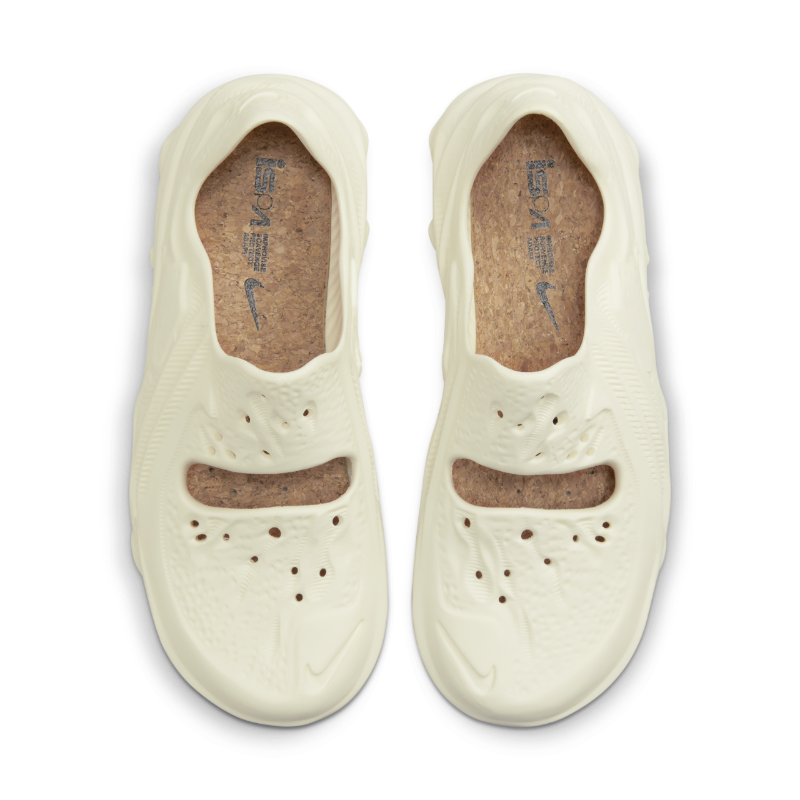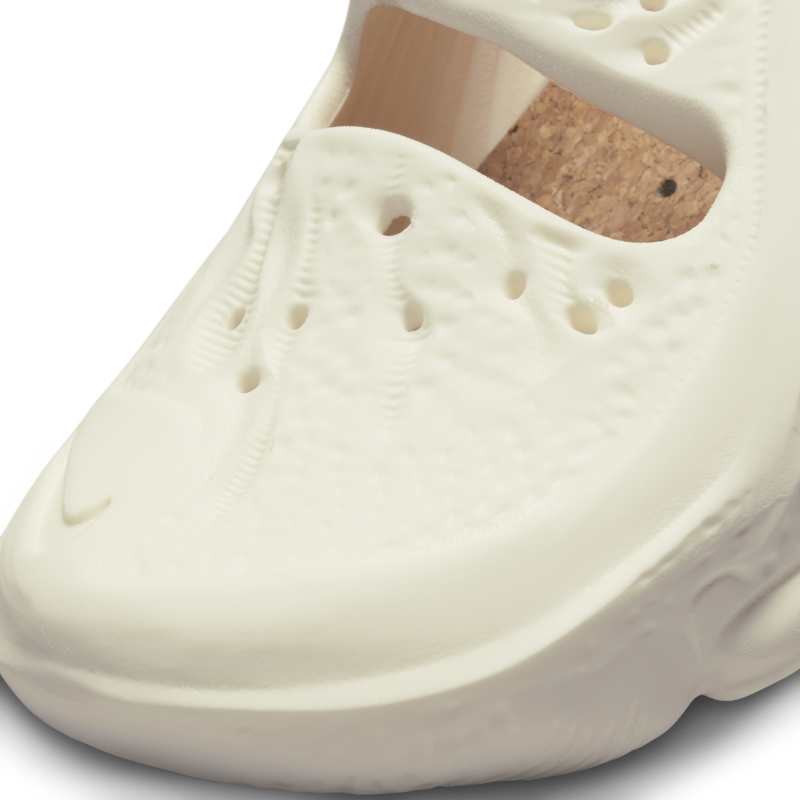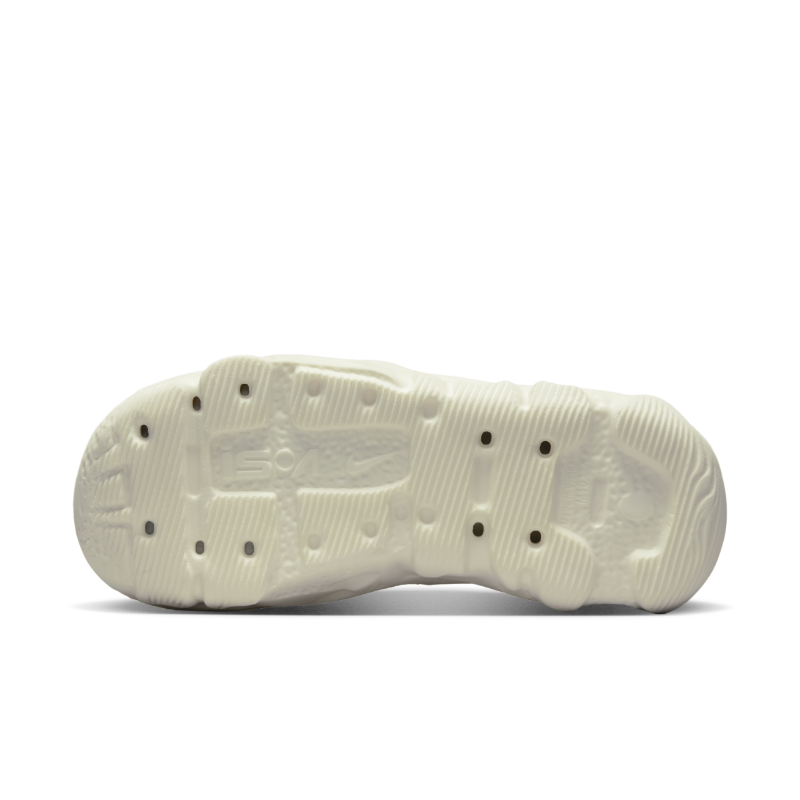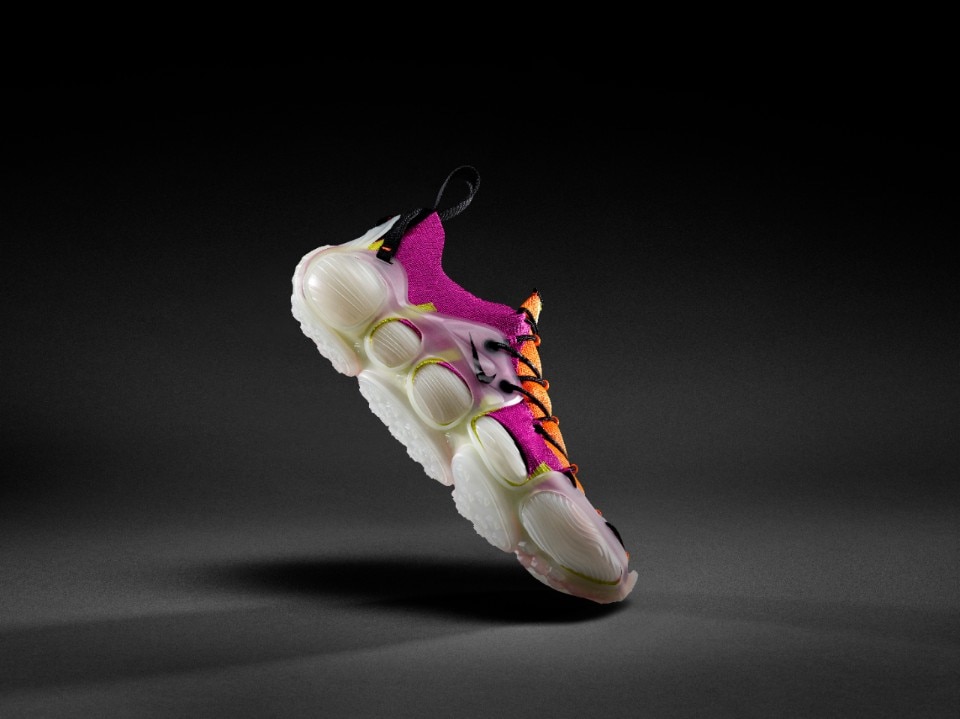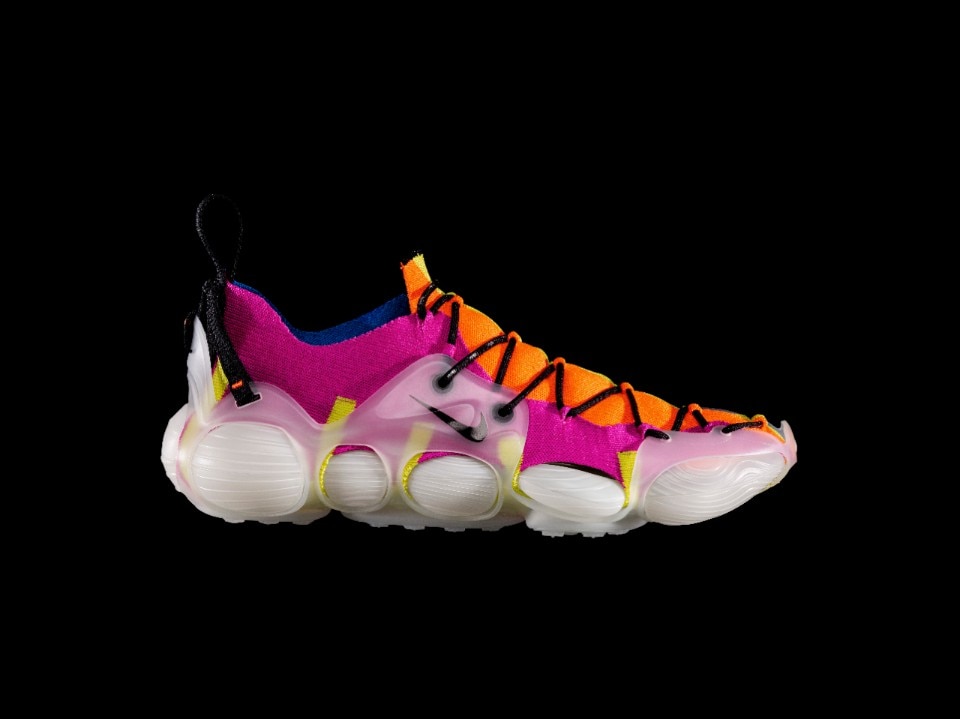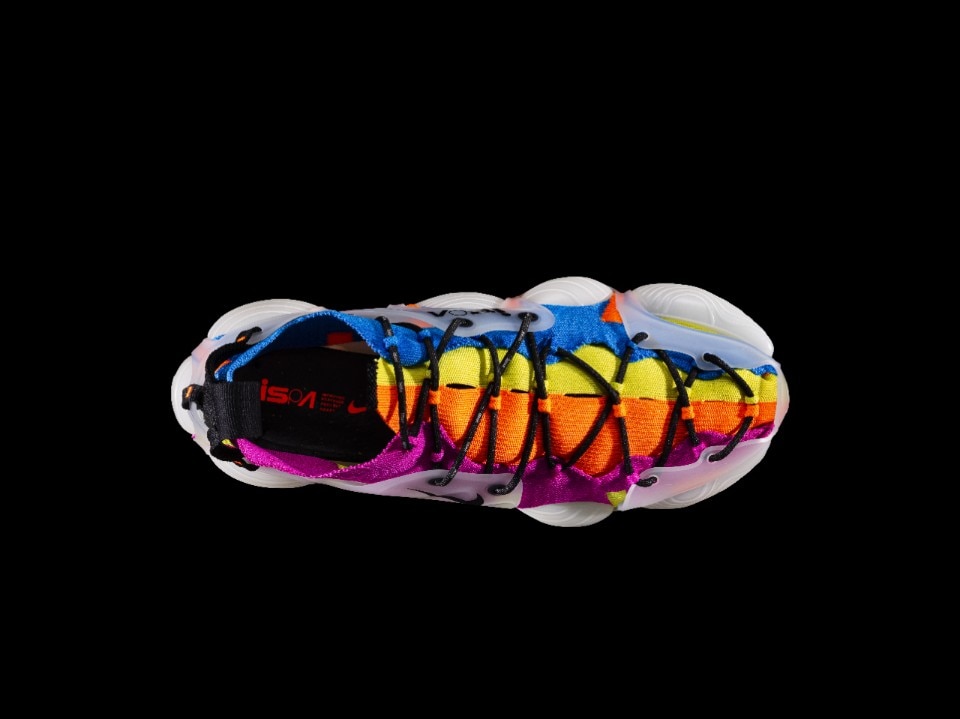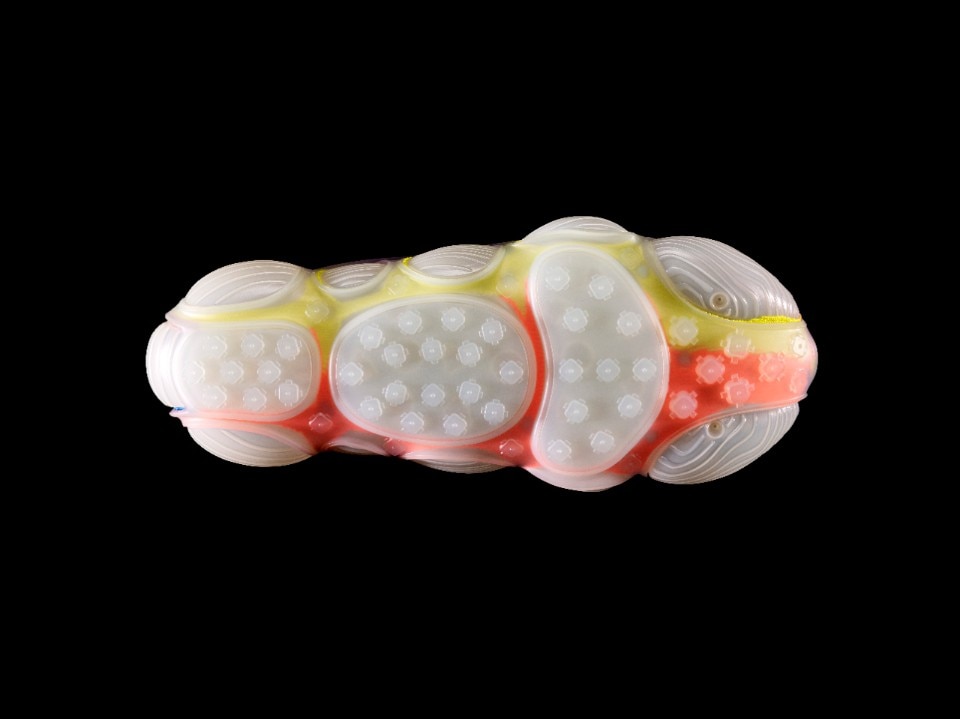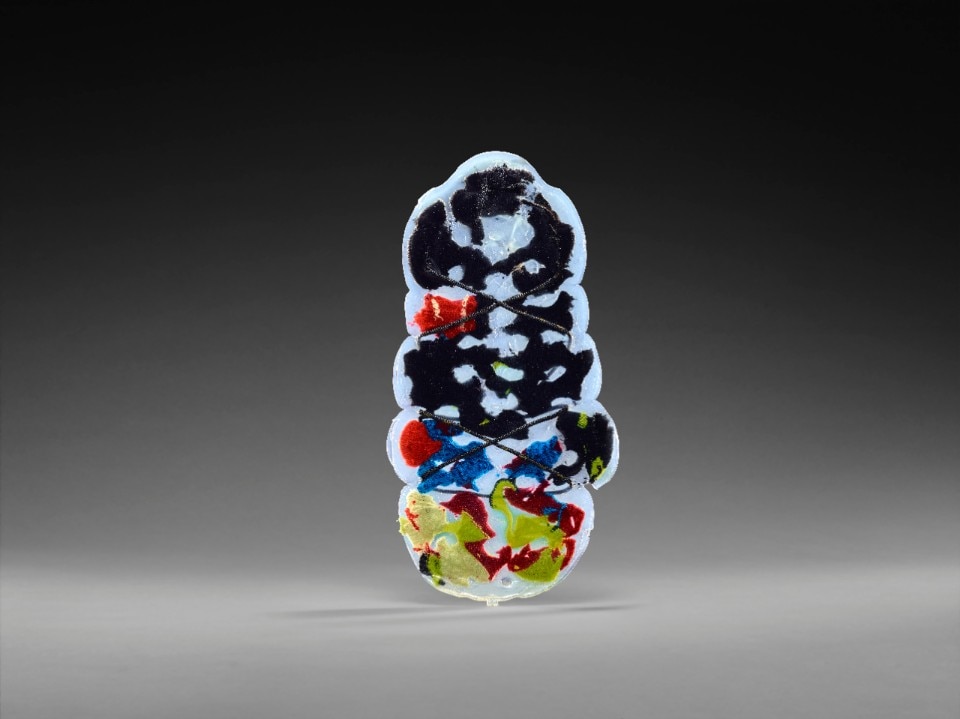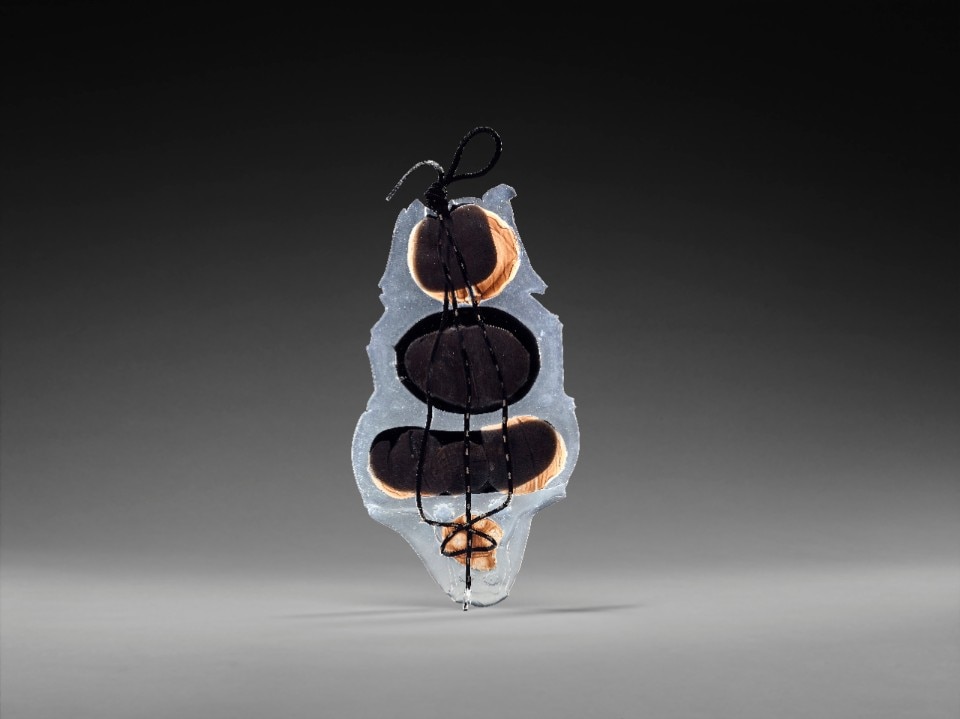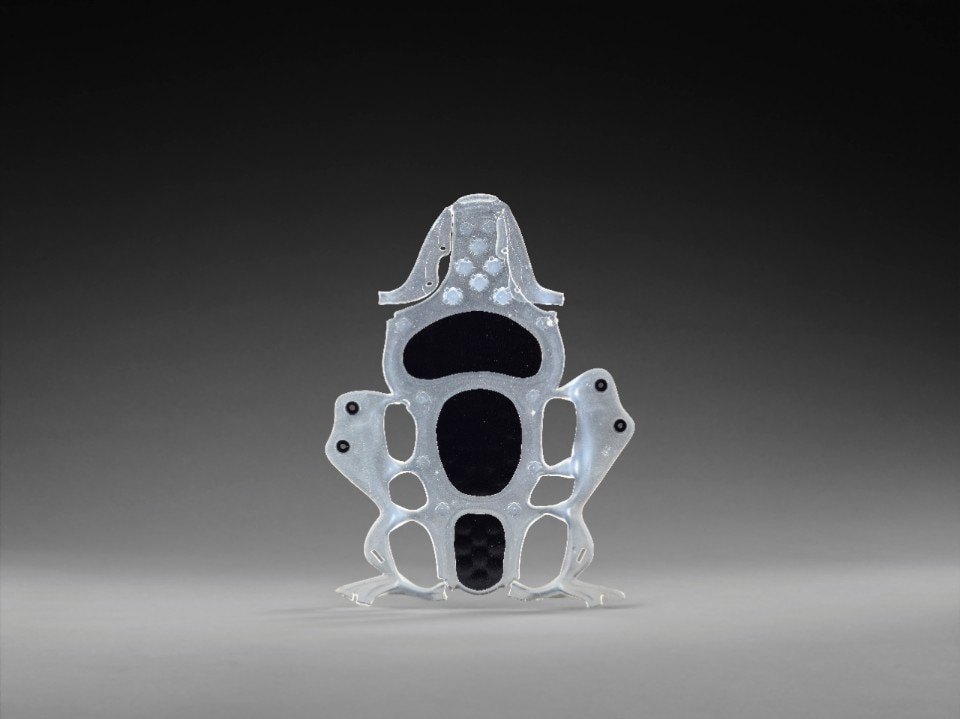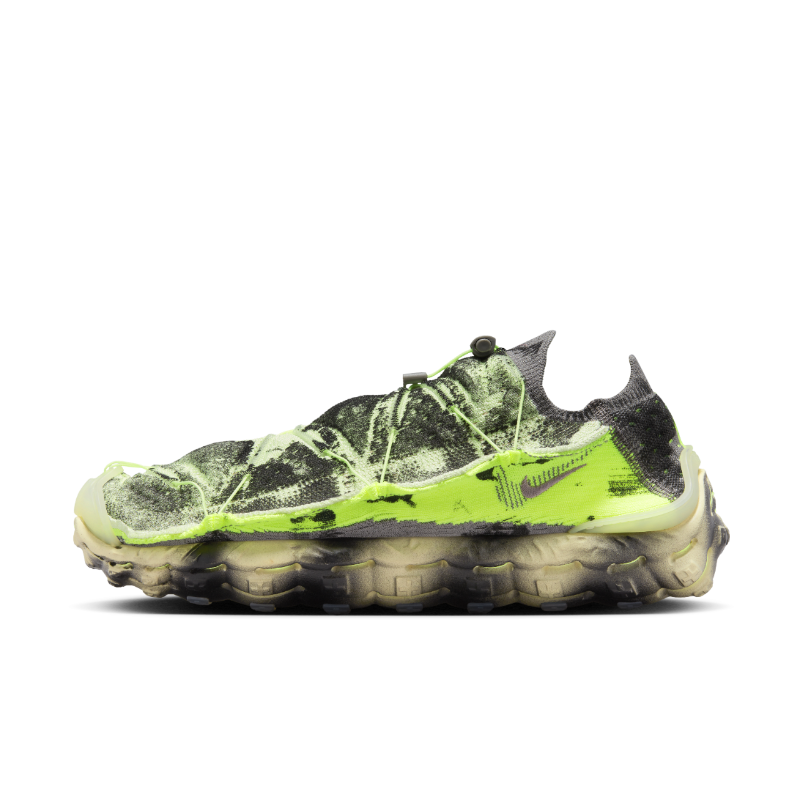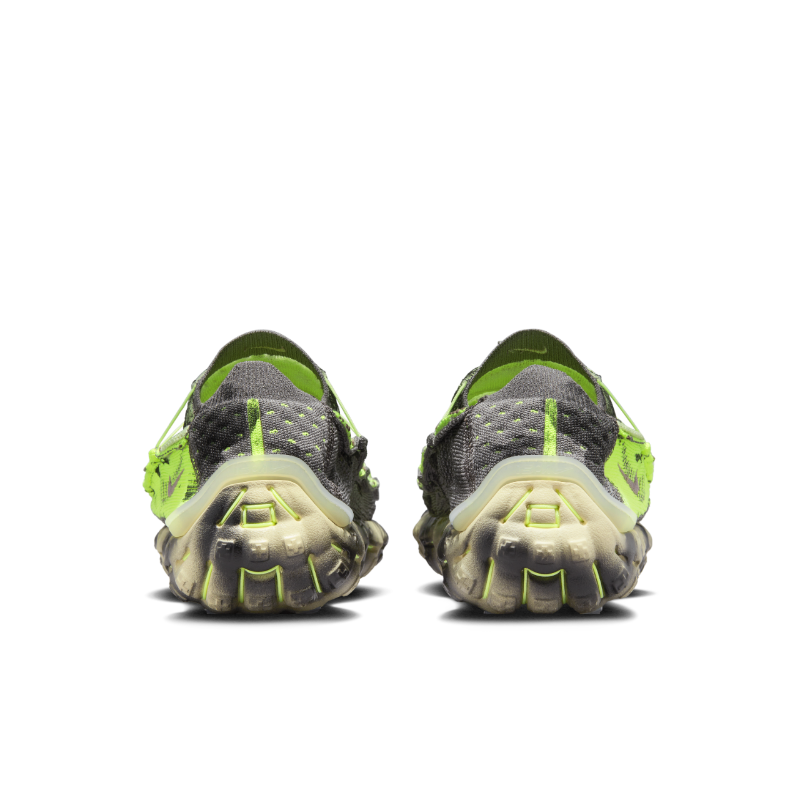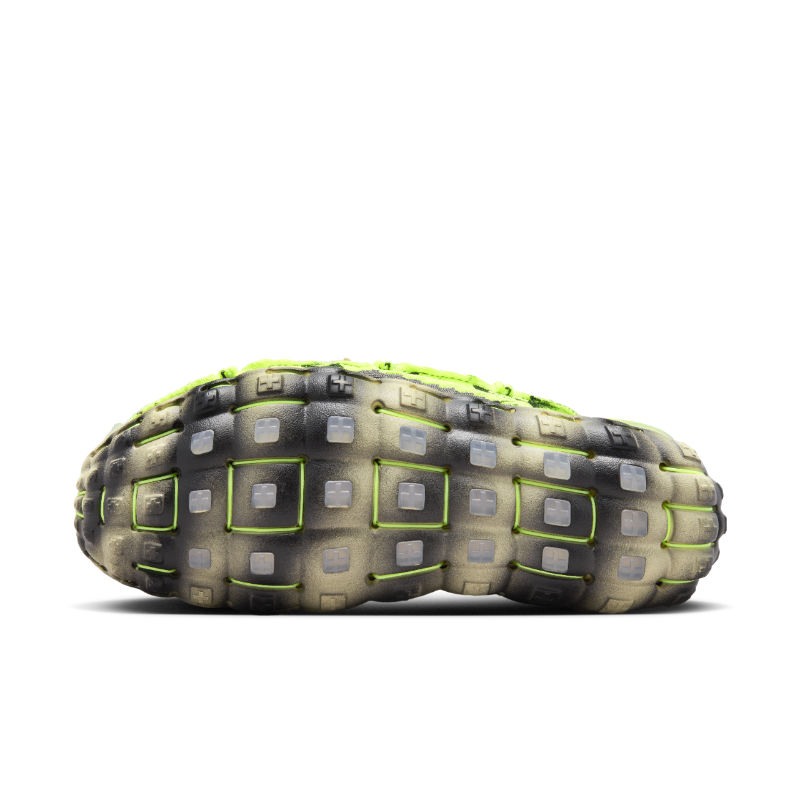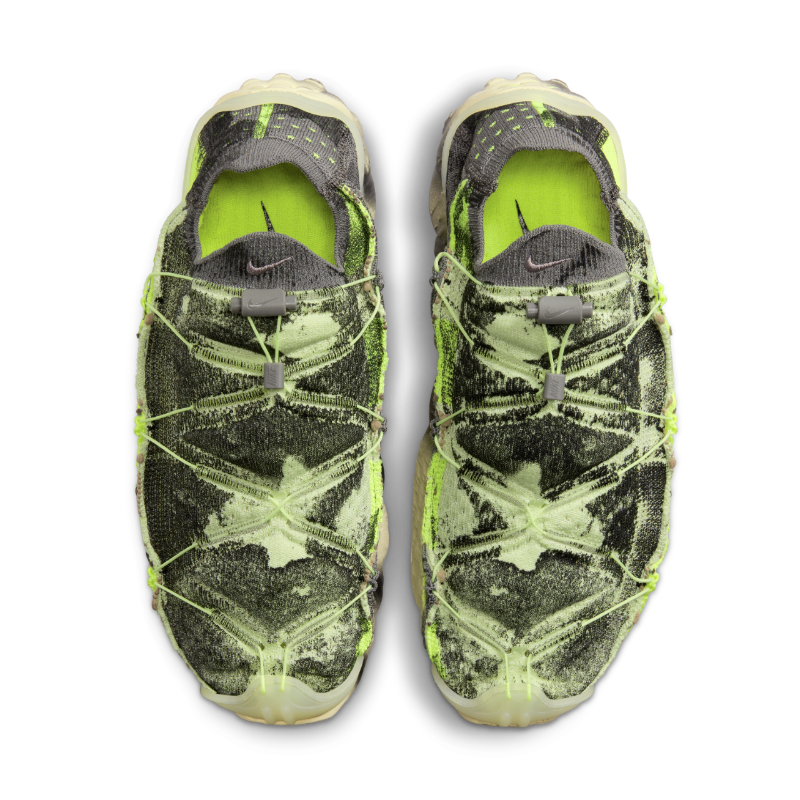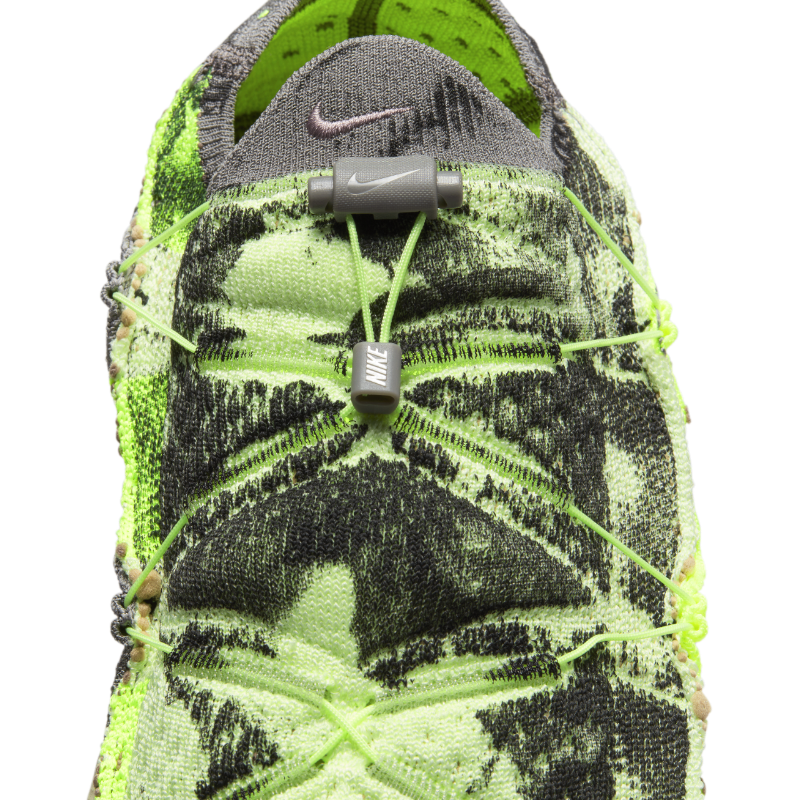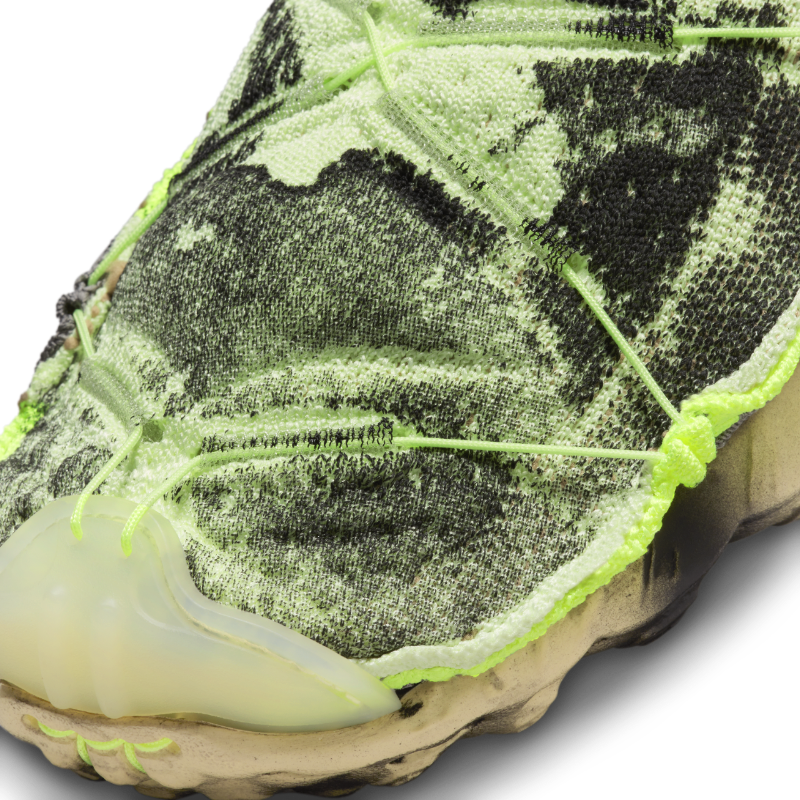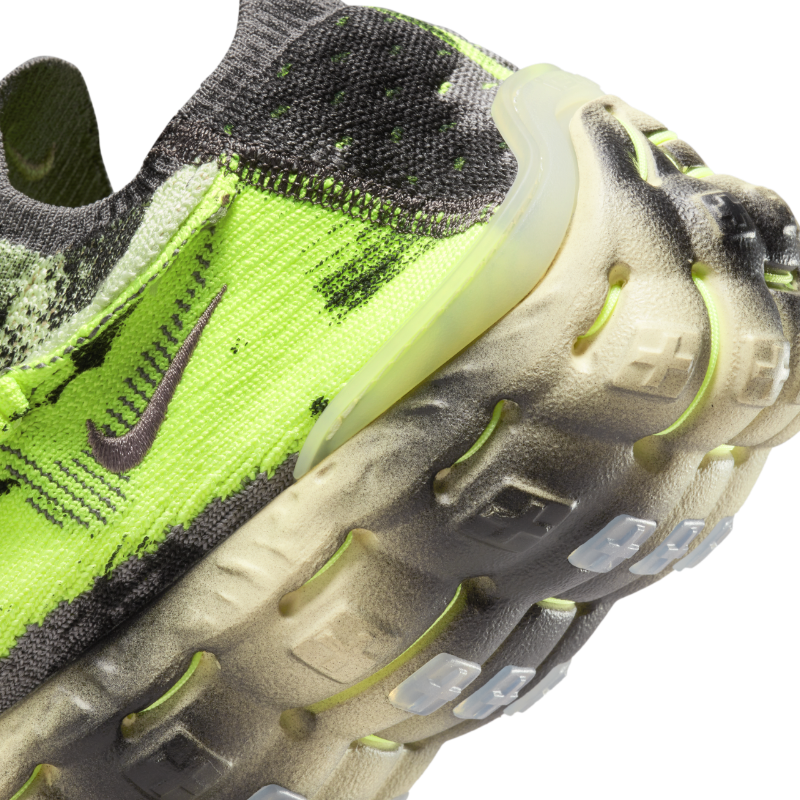ISPA Universal is the new Nike model with which the company opens up to artificial intelligence as a resource for footwear design.
A leap into the future by looking to the past, the ISPA Universal is made with an injection moulding process which employs Bio-EVA foam obtained from sugar cane. At the core is a study of four archive models that have contributed to the brand's history: Nike Solarsoft HTM (2010), Air Max 270 (2018), Air Zoom Pegasus 37 (2020) and Air Zoom Type (2020). Through AI they have been rethought and hybridised to create a design that lies somewhere between streetwear and leisure footwear, neither a trainer nor a slider or sandal. The ISPA Universal features a design with amphibious traits, which by balancing full and empty volumes sums up the research Nike is carrying out on the organic nature of forms and materials, aimed at sustainability.
It is no coincidence that the ISPA Universal is equipped with replaceable cork insoles (each customer is supplied with two) which help to extend the life of the shoe.
Such a design approach mirrors a broader vision, that of the Swoosh, reaffirmed by the installation ISPAnificio (taking place in the spaces of a former bakery) presented during the recent Milan Design Week.
Nike explains how the brand’s dedication to digital tools “involves the use of AI, generating an unlimited number of designs without using nor wasting any physical materials”.
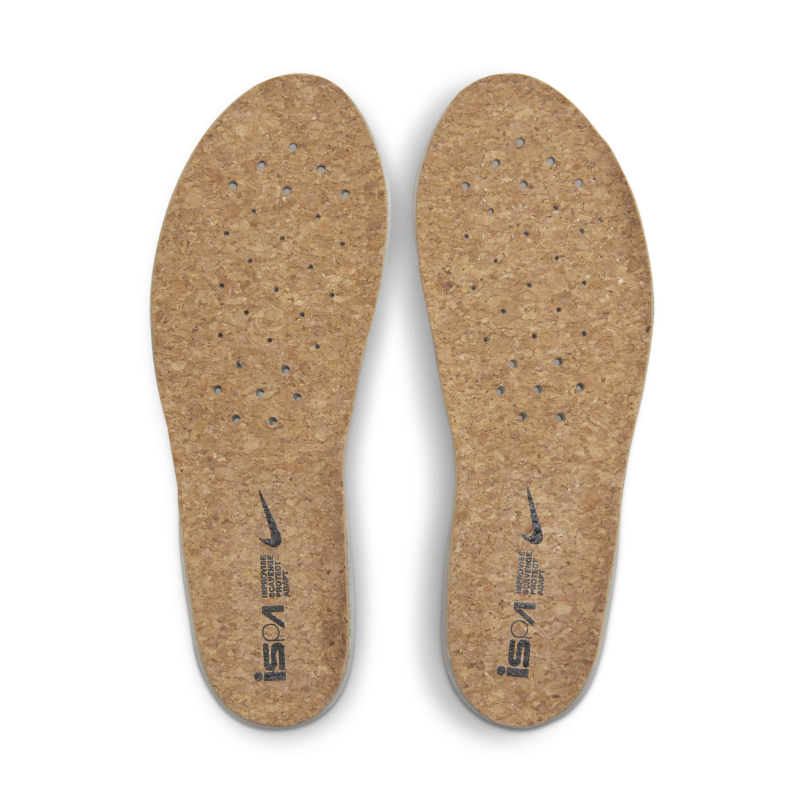
At the same time, Nike invited the audience of the Milan event to interact with clay moulds of sneaker silhouettes, bringing together the technology of 3D printing with craft. The workshop confirmed the brand’s vocation to “go back to a manual approach and start back from and play with clay forms”.
Darryl Matthews, Nike Footwear Design VP, says that “it’s all about open source”. That's because the only way we’re able to educate ourselves is by educating others and vice versa, he adds. “We’re inviting people to the conversation and we’re going to learn from that conversation. Ours is a cultural and social commentary, and we are so happy to be expressing ourselves through the means of footwear.”
Such a commentary Matthews talks about is the Swoosh’s will to capture, through design, the technological development and the evolving status quo of our society.
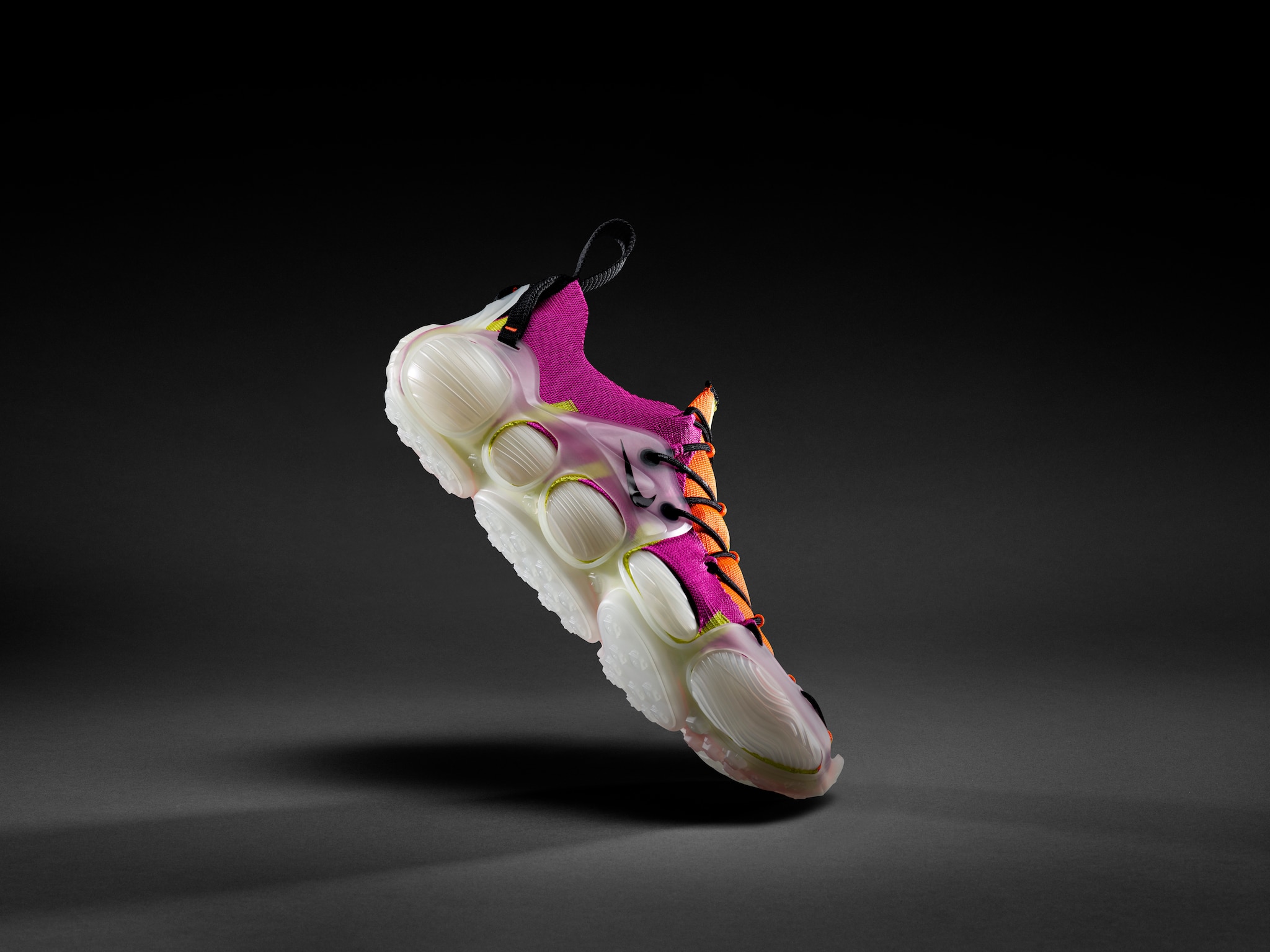
 View gallery
View gallery
On that occasion, Nike also showcased two new footwear designs. The first one is the ISPA Link Axis. Popping to one’s eye, more than the sneaker itself, is the possibility to take it apart and put it in a circular cycle of production where “the matter is shredded and reworked as forms and parts”. The process brings up the important theme of the afterlife of footwear. As Nike points out, a sneaker can be transformed into something even more functional or desirable, like the components of a skateboard.
“I think what we are finding is that the design community is starting to understand more why they do what they do,” explains Matthews, “When the first Ispa collection came out we ended up getting some traction because it met a similar kind of demographic and nomenclature going on within the sneaker world. People were associating it with a trend, but it wasn’t just that. It took two years to understand what we were doing, but not only internally, but also for the public.”
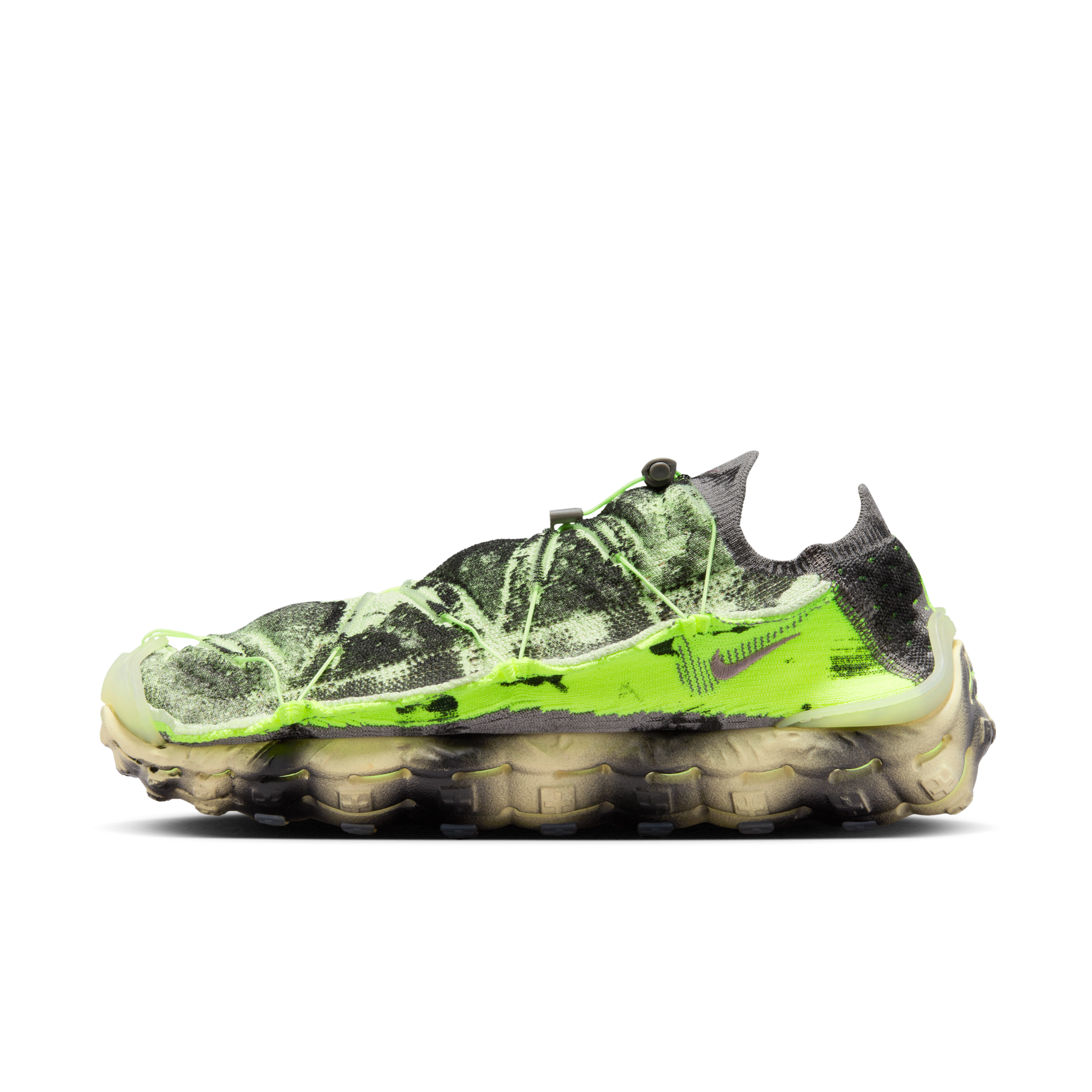
 View gallery
View gallery
The ISPA MindBody – the third shoe presented at ISPAnificio – traces the profile of a homo novus who ventures into the woods to return home with organic materials from which to draw design inspiration. The modular trainer, assembled without the use of glues and solvents and with an average of 60% less waste than traditional manufacturing methods, features Flyknit padding under the foot. It has been designed to give the sensation of walking barefoot on grass and pine needles. Banana peels and seaweed, on the other hand, are turned into fabrics for technical clothing, the colouring of which is given by natural coffee-based dyes.
“The concept is to create clothing in symbiosis with the ecosystem,” concludes Nike.
Opening image: Nike ISPA Universal. Photo: courtesy Nike, Inc.


